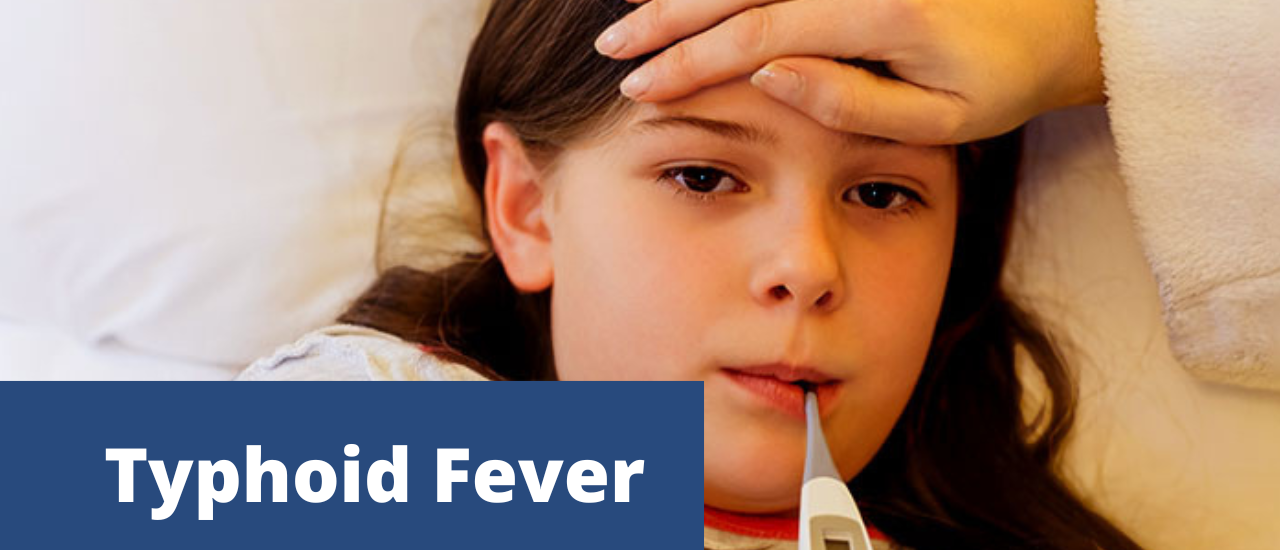


Salmonella germs are the cause of typhoid fever, a bacterial infection. Its symptoms, which include fever, headache, abdominal pain, and a rash, are spread by contaminated food and water. It can result in catastrophic problems if untreated. Salmonella is a kind of bacteria that can make people sick from eating. Salmonella germs come in a wide variety of forms, but the two that sicken people most frequently are Salmonella enterica and Salmonella bongori. These bacteria can produce symptoms including diarrhoea, fever, abdominal cramps, and vomiting that normally last from a few days to a week and are typically transferred by contaminated food and drink. It’s crucial to handle food properly, completely prepare meat, and maintain good cleanliness.
The symptoms of typhoid fever typically develop 1-2 weeks after exposure and can include:
In severe cases, typhoid fever can also cause confusion, delirium, and pneumonia. If left untreated, it can lead to serious complications, such as internal bleeding, perforation of the intestines, and sepsis.
Typhoid fever is caused by the bacterium Salmonella bacteria, which is spread from person to person through contaminated food and water. The most common ways that the bacteria are spread include:
Other risk factors for typhoid fever include traveling to areas with poor sanitation, working in a job that involves close contact with contaminated food or water, and having a weakened immune system. To prevent the spread of typhoid fever, it is important to practice good hygiene, such as washing your hands regularly, cooking food thoroughly, and avoiding contaminated food and water.
Typhoid fever is most common in developing countries with poor sanitation and limited access to clean water. According to the World Health Organization (WHO), there are an estimated 21.7 million cases of typhoid fever and 223,000 deaths from the disease each year, primarily in Asia and Africa. In developed countries, typhoid fever is relatively rare, but it can still occur in people who have traveled to areas where the disease is prevalent. People who are at increased risk of exposure to S. bacteria, such as travelers and people who work with contaminated food or water, are advised to get vaccinated against typhoid fever to reduce their risk of infection.
Typhoid fever typically progresses through three stages:
It is important to seek medical attention as soon as possible if you suspect you have typhoid fever, as early treatment can help prevent serious complications and improve the chances of a full recovery.
Millions of individuals are impacted by typhoid fever each year, which is a severe threat to the entire world. Africa and South Asia are the regions with the greatest number of cases or frequent outbreaks. However, cases are reported everywhere, frequently as a result of visitors to and from these regions.
You run a higher risk of contracting typhoid fever if you reside in a nation where it is uncommon:
Fourth Stage: At this point, things start to take a severe turn. Abdominal bleeding could result from a severe intestinal perforation. Brain inflammation or encephalitis could develop. Dehydration could happen to the person, intensifying their delirium.
Typhoid and typhus are two different diseases caused by different bacteria.
It is caused by the bacterium Salmonella typhi and is usually spread through contaminated food and water. Symptoms include fever, headache, abdominal pain, and a rash.
Typhus is caused by either Rickettsia typhi (murine typhus) or Rickettsia prowazekii (epidemic typhus) and is spread through the bites of infected fleas. Symptoms include fever, headache, muscle aches, and a rash.
In general, typhoid is more severe and lasts longer than typhus, but both diseases can be treated with antibiotics.
There are several tests that can be done to diagnose typhoid fever, including:
It’s important to note that these tests can have false negative results, especially in the early stages of the disease, so a combination of tests may be used for a more accurate diagnosis.
There are several ways to prevent typhoid fever, including:
It is important to take precautions when traveling to areas with a high risk of typhoid fever and to seek medical attention if symptoms develop.
Lyme Disease Rash Symptoms In Humans & Its Different Stages
Know About The Sinus Infection Symptoms In Child & Adults
Hantavirus Symptoms: Types, Risk Factors & Avoidance
What Is Hay Fever Fatigue: Symptoms, Causes & Treatment
Dengue Fever And The Guidelines About The Symptoms & Treatments Of Dengue